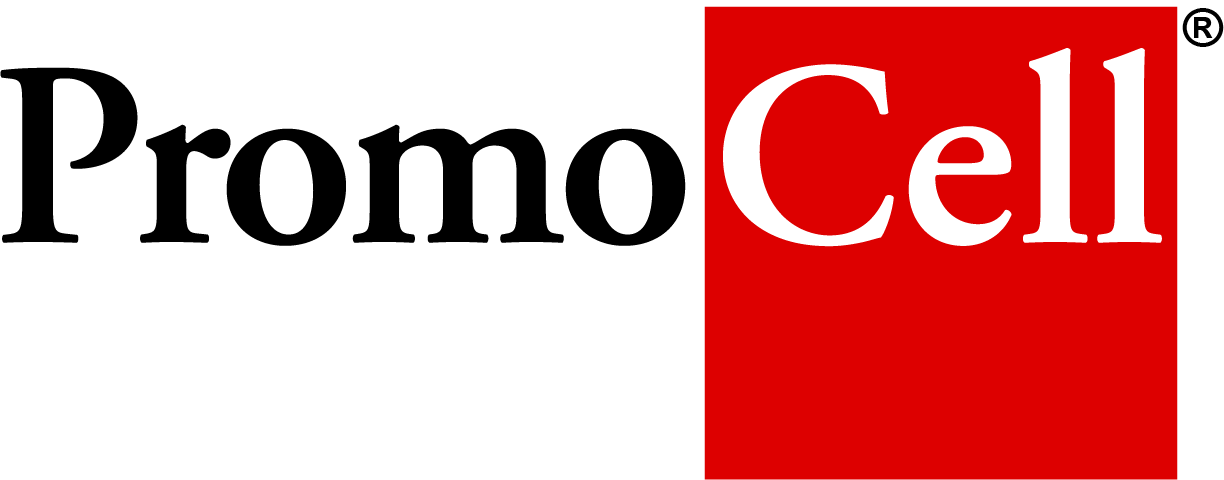黑色素细胞
\"正常人表皮黑素细胞(NHEM)少年包皮者”,Normal Human Epidermal Melanocytes (NHEM) juvenile foreskin,NHEM.f-c,500,000 cryopreserved cells。
以下是产品的详细信息,可点击链接查看:
http://www.PromoCell-china.com/fileadmin/info/C-12400.pdf
正常的人类皮肤黑色素细胞(NHEM) 分离自青少年包皮的表面皮肤,或者各个部位的皮肤*,包括面部、乳房、腹部和大腿。这些细胞定位于皮肤的基底细胞层,但其分支位于基底细胞层以上的角质化细胞之间。
表皮中大约 5-10%的细胞为黑色素细胞。黑色素细胞的主要功能是产生黑色素,后者是一种蛋白质,负责使皮肤、眼睛和头发色素沉着黑色素可以保护皮肤中的细胞,以及更深层次的细胞免于受到紫外线的辐射伤害。黑色素产生并储存于黑色素体中,黑色素体在靠近黑色素细胞的细胞膜的地方,但也可以转移到邻近的角质化细胞中。
PromoCell黑色素细胞使用无血清的含有PMA(佛波醇十四醋酸酯)的黑色素细胞生长培养基或无血清、无PMA的黑色素细胞生长培养基2进行分离。
由于PMA是一种诱导肿瘤产生的促细胞分裂剂,它可能会干扰实验进程。因此,我们推荐使用在不含血清也无PMA的M2型黑色素细胞生长培养基2中分离的细胞,同时使用该培养基进行细胞培养。
The cells have been tested: Mel-5 positive
Figure: Structure of the epidermis with the location of a melanocyte.
images/187/Melanocytes_2.jpg
应用范围
- 皮肤病学研究
- 黑色素瘤研究
- 黑色素生成研究
- 化妆品和毒理学检测
- 皮肤化合物筛选
- 有来源于青少年包皮或成年人不同部位的皮肤
- 有浅色、中等色和黑色皮肤人种来源的
- 如果有需要,可以提供特定发色和眼睛颜色供者来源的黑色素细胞
- Mel-5 阳性
- 可以在含有或不含有PMA的培养基中培养
推荐的培养基及试剂
相关产品
- NHEM.f 细胞团块
- NHEM.f M2 细胞团块
- NHEM M2 成人细胞团块
- 正常人类真皮成纤维细胞
- 正常人类表皮角质形成细胞
- PromoFection转染试剂
知识库
http://www.promocell.com/knowledge-base/search-for-information/?tx_na15knowledgebase_pi1%5Bcategories%5D%5B0%5D=3&tx_na15knowledgebase_pi1%5Bsword%5D=NHEM&tx_na15knowledgebase_pi1%5Bresults_at_a_time%5D=30
Epidermal melanocytes represent 5-10% of the cells in the epidermis. Located in the stratum basale with extensions to the suprabasal layers, they are specialized in the production of melanin. This protein is responsible for the pigmentation of the skin, hair and eyes and exerts a protective effect on adjacent cells by shielding them from the harmful effects of UV radiation.
PromoCell offers a range of Normal Human Epidermal Melanocytes (NHEM) produced at PromoCell’s cell culture facility from donors with lightly, moderately and darkly pigmented skin (detailed pigmentation-related donor-information available on request).
The cells are isolated from juvenile foreskin or adult skin from different locations, e.g. face, breast, abdomen and thighs, using either the serum free, PMA (Phorbol Myristate Acetate) containing Melanocyte Growth Medium or the unique serum-free and PMA-free Melanocyte Growth Medium M2. Since PMA is a tumor-promoting mitogen, which can interfere with experimental approaches, we recommend using Mel-anocytes isolated in Melanocyte Growth
Medium M2 and also using this medium for cultivation.
Shortly after isolation, all PromoCell Normal Human Epidermal Melanocytes are cryopreserved at passage 2 (P2) using PromoCell’s proprietary, serum-free freezing medium, Cryo-SFM. Each cryo vial contains more than 500,000 viable cells after thawing.
Proliferating cell cultures are made from 500,000 cryopreserved cells that have been thawed and cultured for three days at PromoCell.
参考文献
以下是使用PromoCell的\"黑色素细胞”进行研究,近期发表的文章,如下所示:
Increased plasticity of the stiffness of melanoma cells correlates with their acquisition of metastatic properties
Weder et al.; Nanomedicine. 2014 Jan;10(1):141-8
MicroRNA miR-125b controls melanoma progression by direct regulation of c-Jun protein expression
Kappelmann et al.; Oncogene. 2013 Jun 13;32(24):2984-91
Cold atmospheric plasma (CAP), a new strategy to induce senescence in melanoma cells
Arndt et al.; Exp Dermatol. 2013 Apr;22(4):284-9
The abrogation of the HOXB7/PBX2 complex induces apoptosis in melanoma through the miR-221&222-c-FOS pathway
Errico et al.; Int J Cancer. 2013 Aug 15;133(4):879-92
miR-126&126* restored expressions play a tumor suppressor role by directly regulating ADAM9 and MMP7 in melanoma
Felli et al.; PLoS One. 2013;8(2):e56824
Nicotinamide inhibits vasculogenic mimicry, an alternative vascularization pathway observed in highly aggressive melanoma
Itzhaki et al.; PLoS One. 2013;8(2):e57160
HIV Nef, Paxillin, and Pak1/2 regulate activation and secretion of TACE/ADAM10 proteases
Lee et al.; Mol Cell. 2013 Feb 21;49(4):668-79
Demonstration of a melanoma-specific CD44 alternative splicing pattern that remains qualitatively stable, but shows quantitative changes during tumour progression
Raso-Barnett et al.; PLoS One. 2013;8(1):e53883
Modulation of the pro-inflammatory cytokines and matrix metalloproteinases production in co-cultivated human keratinocytes and melanocytes
Decean et al.; Arch Dermatol Res. 2013 Oct;305(8):705-14
NVP-LDE225, a potent and selective SMOOTHENED antagonist reduces melanoma growth in itro and in vivo
Jalili et al.; PLoS One. 2013 Jul 30;8(7):e69064
MiR-101 inhibits melanoma cell invasion and proliferation by targeting MITF and EZH2
Luo et al.; Cancer Lett. 2013 Dec 1;341(2):240-7
MicroRNA-mediated loss of ADAR1 in metastatic melanoma promotes tumor growth
Nemlich et al.; J Clin Invest. 2013 Jun 3;123(6):2703-18
Heterogeneous expression and functional relevance of the ubiquitin carboxyl-terminal hydrolase L1 in melanoma
Wulfaenger et al.; Int J Cancer. 2013 Dec 1;133(11):2522-32
Vitamin A metabolism in benign and malignant melanocytic skin cells: Importance of lecithin/retinol acyltransferase and RPE65
Amann et al.; J Cell Physiol. 2012 Feb;227(2):718-28
Expression and activity of alcohol and aldehyde dehydrogenases in melanoma cells and in melanocytes
Amann et al.; J Cell Biochem. 2012 Mar;113(3):792-9
Signature of VDR miRNAs and epigenetic modulation of vitamin D signaling in melanoma cell lines
Essa et al.; Anticancer Res. 2012 Jan;32(1):383-9
Histology-specific microRNA alterations in melanoma
Poliseno et al.; J Invest Dermatol. 2012 Jul;132(7):1860-8
CXCR1 as a novel target for directing reactive T cells toward melanoma: implications for adoptive cell transfer immunotherapy
Sapoznik et al.; Cancer Immunol Immunother. 2012 Oct;61(10):1833-47
Conserved expression signatures between medaka and human pigment cell tumors
Schartl et al.; PLoS One. 2012;7(5):e37880
Role of ADAM-15 in wound healing and melanoma development
Schoenefuss et al.; Exp Dermatol. 2012 Jun;21(6):437-42
Phenytoin induces in vitro melanocyte proliferation
Porojan et al.; Int J Dermatol. 2012 Nov;51(11):1379-84
Generation of a drug-inducible reporter system to study cell reprogramming in human cells
Ruiz et al.; J Biol Chem. 2012 Nov 23;287(48):40767-78
Identifying mRNA, microRNA and protein profiles of melanoma exosomes
Xiao et al.; PLoS One. 2012;7(10):e46874
PromoCell技术支持
电话:021-68369210
QQ:2788626247
普诺生生物技术有限公司













